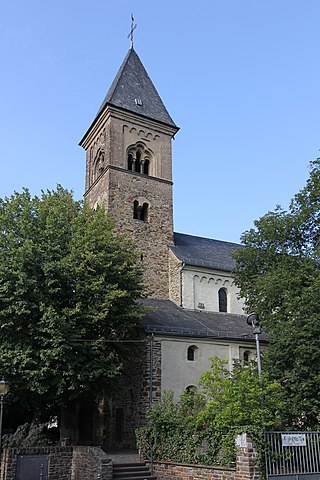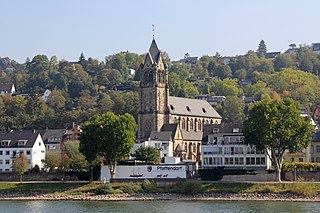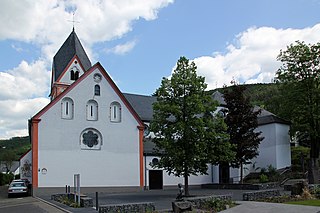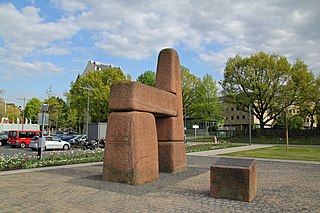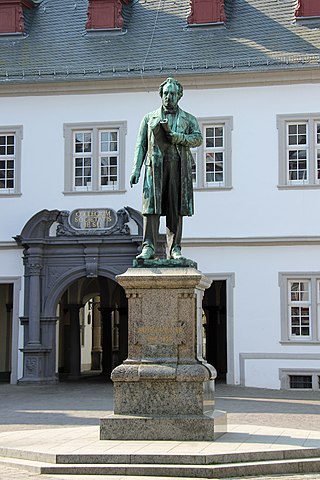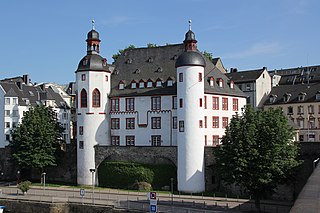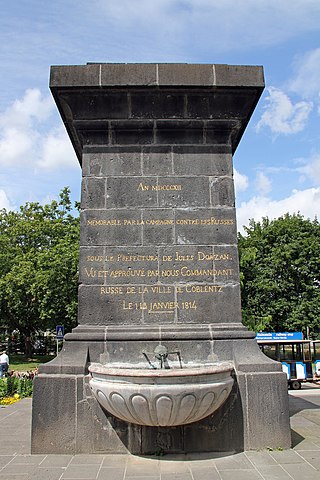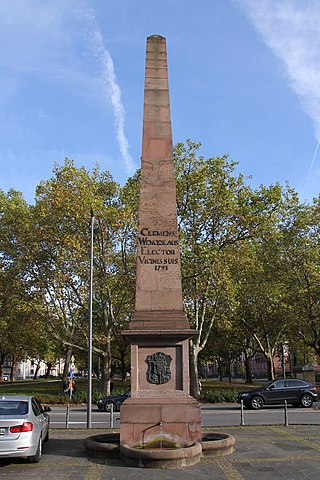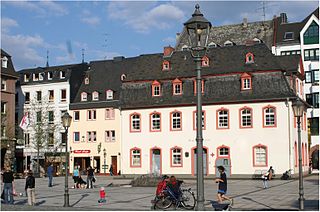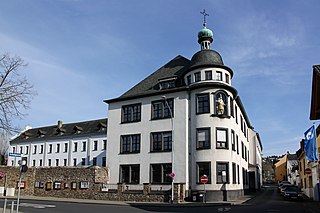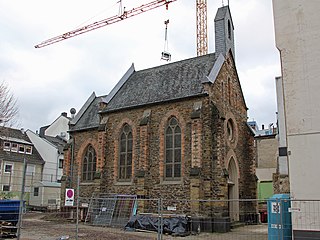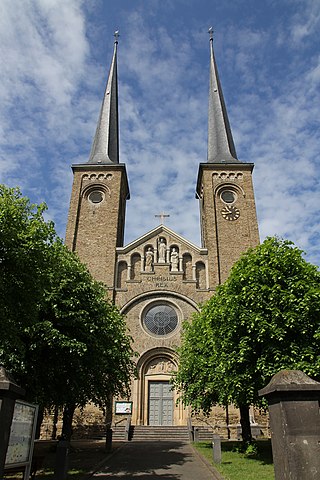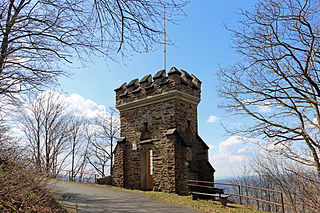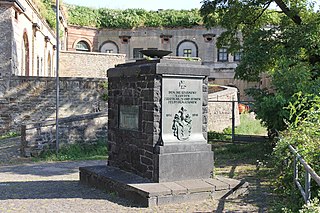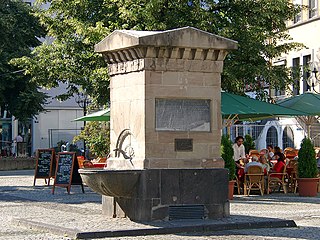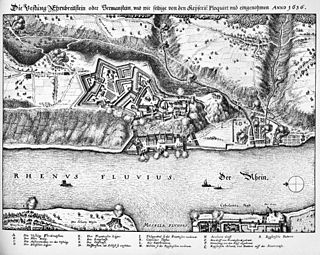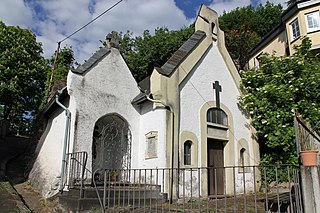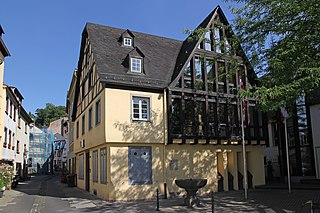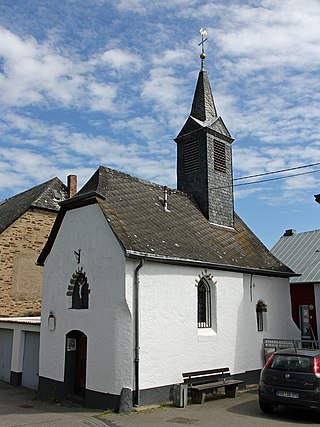67 Sights in Koblenz, Germany (with Map and Images)
Legend
Welcome to your journey through the most beautiful sights in Koblenz, Germany! Whether you want to discover the city's historical treasures or experience its modern highlights, you'll find everything your heart desires here. Be inspired by our selection and plan your unforgettable adventure in Koblenz. Dive into the diversity of this fascinating city and discover everything it has to offer.
Sightseeing Tours in KoblenzActivities in Koblenz1. Liebfrauenkirche
The Church of Our Lady is a Catholic church in the center of the old town of Koblenz. Together with the other two Romanesque churches, the former collegiate churches of St. Kastor and St. Florin, it shapes the silhouette of the old town. The beginnings of the church, which is located at the highest point of the old town, date back to the 5th century. From the late Middle Ages to the French Revolution, it was the main parish church of Koblenz. It bears the patronage of Mary, the mother of Jesus, and is a major work of medieval sacred architecture on the Middle Rhine.
2. Feste Kaiser Franz
The Fortress of Emperor Franz, also known as the Fortress of Franz, was part of the Prussian fortress of Koblenz and the main work of the Fortress of Emperor Franz system. The fortress on the Petersberg in today's Koblenz district of Lützel was completed in 1822. After its demolition in 1922, large remains of the fortification were blown up in 1959. The two lateral ends of the semicircular reduit and the throat tower at the foot of the Petersberg have been preserved. It was named after the Austrian Emperor Franz I, an ally of Prussia in the Holy Alliance after Napoleon's defeat in the Wars of Liberation.
3. Kaiserin-Augusta-Denkmal
The Empress Augusta Monument in Koblenz was erected in honour of Augusta of Saxe-Weimar-Eisenach, the wife of Wilhelm I and German Empress. The monument stands in the southern section of the Rhine facilities initiated by Augusta as a landscape park in the Südliche Vorstadt district and was inaugurated on 18 October 1896, six years after her death. The Augusta sculpture in the monument was created by Karl Friedrich Moest. The monument itself was planned and built by Bruno Schmitz, who is also the creator of the Deutsches Eck two kilometres down the Rhine.
4. Pfarr- und Wallfahrtskirche St. Nikolaus
The Parish and Pilgrimage Church of St. Nicholas is a Roman Catholic church in Koblenz, Germany. The parish and pilgrimage church, located in the Arenberg district, was built between 1860 and 1872 in the neo-Romanesque style by Pastor Johann Baptist Kraus (1805–1893), the founder of the Pastor Kraus facilities and the Arenberg pilgrimage site. It bears the patronage of St. Nicholas of Myra.
5. Kaiser-Wilhelm-Denkmal
The Deutsches Eck is the name of a promontory in Koblenz, Germany, where the Mosel river joins the Rhine. Named after a local commandry of the Teutonic Order, it became known for a monumental equestrian statue of William I, first German Emperor, dedicated in 1897 in appreciation of his role in the unification of Germany. One of many Emperor William monuments raised in the Prussian Rhine Province, it was dismantled on the orders of the French military government immediately after the Second World War, and only the plinth was preserved as a memorial. Following German reunification, a replica of the statue was erected on the pedestal after controversial discussions in 1993. It is today a Koblenz landmark and a popular tourist attraction.
6. Florinskirche
The Florinskirche is a Protestant church in the old town of Koblenz. The church building, which was built around 1100 and dominates the city skyline, belonged to the canons' monastery of St. Florin, which was secularized in 1802. After that, in 1820, it was assigned to the Protestant parish of Koblenz. The early medieval church building is a prime example of Romanesque sacred architecture on the Middle Rhine. The Florinskirche, together with the Bürresheimer Hof, the Altes Kaufhaus and the Schöffenhaus, forms an ensemble of four historic buildings on Florinsmarkt. It is owned in equal parts by the state of Rhineland-Palatinate, in the legal succession of Prussia, and the Protestant parish of Koblenz-Mitte.
7. Pfarrer-Kraus-Anlagen
The Pfarrer-Kraus-Anlagen are a religious park landscape in Koblenz. Built from 1845 onwards and unique in Europe, the landscape picture bible is located in the Arenberg district. They are named after their founder, the Catholic priest Johann Baptist Kraus (1805–1893). In the park there are about 60 chapels, grottoes and wayside shrines as well as a Way of the Cross, which were particularly suitable for people of the 19th century who were not able to read.
8. Herz-Jesu-Kirche
The Herz-Jesu-Kirche is a Catholic church in the old town of Koblenz, which was built as part of the southern expansion of the city from 1900 to 1903. It is one of the most important neo-Romanesque sacred buildings in Germany. North of the parish church is the Löhr Center, an inner-city shopping center. The church is dedicated to the Sacred Heart of Jesus.
9. Schängelbrunnen
Schängel is a dialect name (Ortsneckname) for the boys born in the city of Koblenz. Koblenz is also often referred to as the "Schängel city". In 1914, a carnival song was dedicated to the Schängeln and in 1941 a fountain was built for them in the town hall courtyard, which became a landmark of the city.
10. Forum Mittelrhein
The Forum Mittelrhein is a shopping center on the Zentralplatz in Koblenz, Germany. The shopping center was built by ECE Projektmanagement, which already operates the Löhr Center in Koblenz, and opened on September 26, 2012. Next to it is the Forum Confluentes, a cultural building in which the Middle Rhine Museum, the Koblenz City Library, the Romanticum and the Tourist Information Office found a new home on 20 June 2013.
Wikipedia: Forum Mittelrhein (DE), Website, Yelp, Foursquare
11. Jesuitenkirche
The Jesuit Church of St. John the Baptist, today also called Citykirche, is a branch church of the Catholic parish of St. Kastor in Koblenz. It stands on the site of the 17th-century church on Jesuitenplatz, which was destroyed in 1944, next to the former Jesuit college, which now houses the Koblenz town hall. The patron saint of the church is John the Baptist.
12. Sankt Josef
The parish church of St. Josef is a Catholic church in the southern suburbs of Koblenz, Germany. It was built at the end of the 19th century in the course of the southern expansion of the city. Its steeple, which characterises the cityscape, is the highest in the city at 93 m. It bears the patronage of St. Joseph, which is a signal of the Catholic Church's assertion against Prussia a few years after the Kulturkampf.
13. Löhr-Center
The Löhr-Center is a shopping center in the city center of Koblenz. It was opened in 1984 to the north of the Herz-Jesu-Kirche. The operator of the Löhr Center is the ECE Group, which also operates the Forum Mittelrhein on Koblenz's central square.
14. Maria-Hilf-Kapelle
Maria Hilf was a Catholic parish and pilgrimage church in Koblenz, Germany. It was completed in 1953 in the Lützel district and was attached to the Maria Hilf Chapel, which had already been built between 1905 and 1907. It is under the patronage of St. Mary, the mother of Jesus, in her function as a help of Christians. In January 2017, the church was profaned and demolished in May of the same year, but the older chapel was preserved and is being restored.
15. Barbara-Denkmal
The Barbara Monument, also known as the Artillery Monument, is a monument inaugurated in 1907 on the Kaiser-Wilhelm-Ring in Koblenz. It was built in honour of the soldiers of the Rhenish Field Artillery Regiment No. 8, which was stationed in Koblenz from 1820 to 1887, who died in the wars of unification of the 19th century. The war memorial was damaged in the air raids on Koblenz and finally dismantled in 1956 in the course of road construction work. In autumn 2014, the restored monument was re-erected near its original location.
16. Joseph-Görres-Denkmal
The Joseph Görres Monument in Koblenz was erected in honour of the publicist Joseph Görres, who was born in the city. The monument stands behind the Electoral Palace in the Rhine grounds and was inaugurated on 24 June 1928. The bronze sculpture on a pedestal made of Rochlitz porphyry was created by the Düsseldorf sculptor Richard Langer.
17. Kurfürstliches Schloss
The Electoral Palace in Koblenz, was the residence of the last Archbishop and Elector of Trier, Clemens Wenceslaus of Saxony, who commissioned the building in the late 18th century. In the mid-19th century, the Prussian Crown Prince had his official residence there during his years as military governor of the Rhine Province and the Province of Westphalia. It now houses various offices of the federal government.
18. Klosterkirche St. Franziskus, St. Philippus Ap. und Karl Borromäus
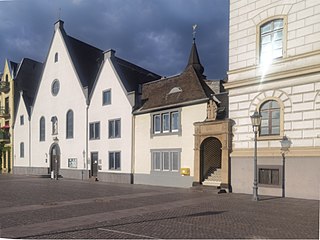
The Capuchin Monastery of Koblenz was a monastery in Koblenz, which was operated from 1627 to 2008 with interruptions by Capuchins. The monastery in the Ehrenbreitstein district was the seat of the provincial administration of the Rhenish-Westphalian Order Province from 1908 to 2007. The monastery complex includes the baroque church of St. Francis. Since 2013, parts of the monastery have been used by a convent of the Teutonic Order.
19. Wehrtechnische Studiensammlung
The Bundeswehr Museum of German Defense Technology also known as Wehrtechnisches Museum Koblenz and Wehrtechnische Studiensammlung Koblenz (WTS-Koblenz) is the official Bundeswehr's Defense Technology Study Collection in Koblenz. It is one of Germany's important technical military exhibitions, with about 30,000 objects on an exhibition area of around 7,000 square metres (75,000 sq ft). It is known as one of the most extensive collections of its kind internationally. The main focus of the museum is on defense technology and the military science library. It is a subsidiary of the Federal Office of Bundeswehr Equipment, Information Technology and In-Service Support.
Wikipedia: Bundeswehr Museum of German Defense Technology (EN)
20. Basilika Sankt Kastor
The Basilica of St. Castor is the oldest church in Koblenz in the German state of Rhineland Palatinate. It is located near Deutsches Eck at the confluence of the Rhine and the Moselle. A fountain called Kastorbrunnen was built in front of the basilica during Napoleon's invasion of Russia in 1812. Pope John Paul II raised St. Castor to a basilica minor on 30 July 1991. This church is worth seeing for the historical events that have occurred in it, its extensive Romanesque construction and its largely traditional furnishings.
21. Heilig-Kreuz-Kirche
The Holy Cross Church is a Catholic church in Koblenz, Germany. The former parish church in the Ehrenbreitstein district was built between 1962 and 1964 on the site of a predecessor building from the 18th century. The neighbouring Heribert Tower has served as the church's bell tower since 1848. The church is dedicated to the Holy Cross, on which Jesus died.
22. Marceau-Denkmal
The Marceau Monument is a monument in Koblenz in honor of the French general François Séverin Marceau (1769–1796). It is located in the French cemetery in the Lützel district and was originally built in 1797 as a tomb for Marceau on the Petersberg.
23. Haus Metternich
The Haus Metternich, also known as the Metternicher Hof, is a former town courtyard in the old town of Koblenz. The building, built in 1674, was the birthplace of the Austrian statesman Klemens Wenzel Lothar von Metternich.
24. Jüdischer Friedhof Koblenz
The Jewish Cemetery in Koblenz is a well-preserved burial site of the Jewish community in northern Rhineland-Palatinate. The Jewish cemetery in the Rauental district, which was first built in 1303, is bordered to the north by today's synagogue of the Jewish community of Koblenz and the surrounding districts, which served as a mourning hall until 1947. In its history, the cemetery has been abolished and destroyed several times, but has always been re-established by the Jewish community in Koblenz.
25. Rheinmuseum
The Rhein-Museum Koblenz is a cultural history museum in Koblenz that shows life on the Rhine from various aspects. Founded in 1912, the museum focuses on shipping, ecology, hydrology, Rhine romanticism, tourism, economy and history.
26. Graben
The Neuendorfer Flesche was part of the Prussian fortress of Koblenz and belonged to the system of Feste Kaiser Franz. Of the Flesche, which was completed in 1825 in today's Koblenz district of Lützel, only underground remains remain in the area of the Rhine barracks after it was razed in 1910. It is named after the neighboring district of Neuendorf.
27. Koblenzer Hof
The former Grand-Hotel Coblenzer Hof is a monumental hotel building in the Rhine facilities of Koblenz. Today, the building houses the Federal Office of Bundeswehr Equipment, Information Technology and In-Service Support (BAAINBw), but due to the risk of collapse, most of the building cannot be used. Together with the neighbouring Prussian government building, it forms an ensemble on the banks of the Rhine that characterises the cityscape.
28. Struktur- und Genehmigungsdirektion Nord
The Structure and Approval Directorate North in Koblenz is a higher state authority that is responsible for certain tasks in the north of the state of Rhineland-Palatinate as well as for some tasks throughout the state.
Wikipedia: Struktur- und Genehmigungsdirektion Nord (DE), Website
29. Café Hahn
Café Hahn is a music and cabaret club in Koblenz, Germany. The club, located in the district of Güls, was founded in 1981 by Karl Hubert Hahn. He took over the long-established café with a small supermarket from his father and turned it into the most important cultural club on the Middle Rhine. From 24 to 28 May 2006, the 25th anniversary was celebrated with a big festival and over 50 bands and artists in and around Café Hahn.
30. Christuskirche
The Christuskirche is a Protestant church in Koblenz, Germany. It is the first new Protestant church building in Koblenz, which was completed in 1904 in the course of the southern expansion of the city, and belongs to the Koblenz church district of the Evangelical Church in the Rhineland.
31. St. Johannes
The parish church of St. Johannes Enthauptung is a Catholic church in Koblenz, Germany. A first parish church was built around 1204 in the district of Metternich. The current church building dates from 1914–1916. The special feature of the church is that it has two church towers. It bears the patronage after the beheading of St. John the Baptist.
32. Altes Kaufhaus
The Altes Kaufhaus, also known as the Altes Kauf- und Tanzhaus, is a medieval building in the old town of Koblenz. The building, built between 1419 and 1425 in the late Gothic style, underwent a Baroque reconstruction in 1724 and housed the Middle Rhine Museum from 1965 to 2013. Together with the Bürresheimer Hof, the Schöffenhaus and the Florinskirche, it forms an ensemble of four historic buildings on Florinsmarkt.
33. Weinbrunnen
The Weinbrunnen, also known as the Traubenträgerbrunnen, is a fountain in the Rhine facilities of Koblenz. The wine fountain, created in 1928, was originally erected in front of the Rheinhalle on the former event site of the "Reich Exhibition of German Wine" of 1925. Removed during the rubble removal after the Second World War, the grape-bearer sculpture of the fountain found a new home in the wine village. On the initiative of the Förderverein Rheinanlagen e.V., the complete wine fountain was rebuilt in 2013 on a meadow in front of the wine village.
34. St. Laurentius
The parish church of St. Laurentius is a Catholic church in Koblenz, Germany. The parish church in the Moselweiß district was built at the beginning of the 13th century and underwent several conversions and additions over time. It bears the patronage of St. Lawrence of Rome.
35. Dikasterialgebäude
The Philippsburg palace ) was a former Baroque-style palace in Ehrenbreitstein, a district of the city of Koblenz in Germany. It was situated on the banks of the Rhine river, below the Ehrenbreitstein Fortress. Constructed between 1626 and 1632 by Philipp Christoph von Sötern (1567–1652), Prince-Elector of Trier, it served as the main residence of the Archbishops and Prince-Electors of Trier until 1786. The palace had similarities to Schloss Johannisburg in Aschaffenburg, as they have the same architect.
36. St. Jakobus
St. James is a chapel of the Old Catholic parish in Koblenz, Germany. The Gothic church, built in 1355, was originally a cemetery chapel of the Teutonic Order. It is located opposite the Castor Church and is attached to the south wing of the former Leyensche Hof, which today houses the Rhineland-Palatinate State Office for Roads and Transport. The patron saint of the chapel and community is James the Elder. The Koblenz congregation belongs to the Old Catholic Church in Germany.
37. Historiensäule
The History Column is the essential part of a fountain on Josef-Görres-Platz in the old town of Koblenz. It was given to the city in 1992 by the state of Rhineland-Palatinate on the occasion of its 2000th anniversary. However, the fountain created by the sculptor Jürgen Weber, including the history column, was not completed and handed over to the city until 1 June 2000 due to illness. The 10.59-metre-high, 3.6-tonne and 1.25-million-DM column tells the moving 2000-year history of the city of Koblenz in ten pictures from Roman times to the present day.
38. St. Mauritius
The parish church of St. Mauritius is a Catholic church in the Koblenz district of Rübenach. Located at the highest point of the village, its brick spire largely determines its silhouette. The parish church was built between 1862 and 1866 and bears the patronage of St. Maurice. The co-patron saint is St. Aldegundis.
39. Konradhaus
The Konradhaus is a cultural monument in Koblenz-Ehrenbreitstein, which was built in 1874 as a casino and officers' dormitory. After that, it was used by the Capuchin monastery in Koblenz and as a theatre.
40. Rheinburg
The Rheinburg is a castle-like villa in Koblenz, Germany. It is located in the Ehrenbreitstein district and goes back to the Klausenberg plant, which was built as part of the Ehrenbreitstein city fortifications between 1827 and 1833. Thus, this caponier belonged to the Niederehrenbreitstein system of the Prussian fortress of Koblenz.
41. Mosellum
The Mosellum – Erlebniswelt – Fischpass Koblenz is a visitor and information centre at the Koblenz barrage. In the course of the modernization of the fish pass, the Mosellum with an exhibition around the Moselle was also built and opened in 2011. The exhibition informs visitors on four levels about the topics of aquatic ecology, fish migration in the Moselle, shipping and power generation.
42. Kühkopf
The Kühkopf is a 382-metre-high mountain in the Hunsrück region. It is located in the south of Koblenz in the city forest and belongs to the district of Karthause. On its summit is the Koblenz telecommunications tower.
43. Schöffenhaus
The aldermen's house was the seat of the Electoral Court of Trier for the city of Koblenz. Built between 1528 and 1530 in the late Gothic style, the building housed part of the Middle Rhine Museum until 2013. Together with the Bürresheimer Hof, the Altes Kaufhaus and the Florinskirche, it forms an ensemble of four historic buildings on Florinsmarkt.
44. Sankt Elisabeth
The parish church of St. Elisabeth is a Catholic church in Koblenz, Germany. The church, built in the Rauental district, is one of the most important churches of the 1950s on the Middle Rhine. Since 2012, it has been used mainly as a youth church "X-Ground". It bears the patronage of St. Elisabeth of Thuringia.
45. Maria-Himmelfahrt-Kirche
The parish church of the Assumption of Mary is a Catholic church in Koblenz, Germany. The parish church was built in 1959 in the later founded district of Asterstein on the ground plan of the Holy Robe. It carries the patronage after the Solemnity of the Assumption of the Virgin Mary into heaven.
46. Historische 'Wache Schießstände' (Ruine)
The Lösnich shooting range was a shooting range in Lösnich in the forest above the village in a southerly direction above the former "In der Lust" district. Today cut by a forest path, which was newly laid out as part of the land consolidation in 1976, the complex consists of an artificially created moat, which is still 60 m long and up to 5 m wide, which ends in an east-west direction slightly ascending with a heaped earth wall in the target area. Here, on the left side of the ditch, there is a small bunker-like shelter made of quarry stone (slate) with a side length of about 3 × 4 m and a flat concrete ceiling in the form of a Prussian cap ceiling. The door and window facing the ditch are open and the fabric of the building is already badly damaged.
47. Alt-St. Servatius
Alt-St. Servatius is a Catholic church in Koblenz, Germany. The former parish church was built in the 13th century in the district of Güls. After the late Staufen basilica had become too small, it was replaced only 160 metres away by the new parish church of St. Servatius, built between 1833 and 1840. It bears the patronage of St. Servatius of Tongeren.
48. St. Peter und Paul Kirche
The parish church of St. Peter and Paul is a Catholic church in Koblenz, Germany. The neo-Gothic basilica in the Pfaffendorf district was completed in 1903. It goes back to predecessor buildings, which are documented until the early 14th century. It bears the patronage of the apostles Peter and Paul.
49. Pfarrkirche St. Martinus
The parish church of St. Martinus is a Catholic church in Koblenz, Germany. The parish church in the district of Lay was built in the first half of the 13th century and underwent some renovations and additions over time. It bears the patronage of St. Martin of Tours.
50. Peter-Altmeier-Denkmal
The Peter Altmeier Monument in Koblenz is a monument in honor of the former Prime Minister of Rhineland-Palatinate, Peter Altmeier. The monument, which was inaugurated in 1981, is located in the Moselle facilities (Peter-Altmeier-Ufer) not far from the Deutsches Eck.
51. Johannes-Müller-Denkmal
The Johannes Müller Monument in Koblenz is a monument in honor of the physician Johannes Müller, who was born in the city. It is located in the old town in the center of Jesuitenplatz in front of the town hall of the city of Koblenz.
52. Alte Burg
The Old Castle was a former Elector-owned, substantial water castle in the German city of Koblenz, incepted in the 13th century. It is today reduced to the later Burghaus ; which houses the city archives. It sits on tall foundations and has a tall, black slate roof with further floors in the attic and two small cupolas. The lowland castle abutted the remaining building in the old town quarter. The castle house stands tall, next to the Moselle's right-bank towpath downstream of the strategic Baldwin Bridge built in 1342. The bridge, much-repaired, remains intact.
53. Kastorbrunnen
The Kastorbrunnen in the forecourt of the Basilica of St. Kastor in Koblenz, Rhineland-Palatinate, Germany, is a curious testimony of the Napoleonic Wars. The fountain, built in 1812, was connected to the first aqueduct of the Elector Palatine.
54. Clemensbrunnen
The Clemensbrunnen is a fountain in the old town of Koblenz, Germany. The fountain, built in 1791, originally stood on Clemensplatz and was connected to the first electoral water pipe. Since 1970, it has been standing on Deinhardplatz in front of the theater. It received its name from its builder, the last Elector of Trier, Clemens Wenzeslaus of Saxony.
55. Alte Münze
The Old Mint is the former mint master's house of the Electoral Mint in Koblenz. Originally, the mint consisted of several buildings, but these were demolished except for the mint master's house. Today, the Münzplatz in Koblenz's old town is located in this area.
56. Ludwig Fresenius Schulen
The Salesian convent of Koblenz was a convent of the Order of the Visitation of Mary in Koblenz. The nunnery founded in 1863 in the Moselweiß district was abandoned in 1986. After that, a sports boarding school moved in, and the monastery church of the Visitation of the Virgin Mary was taken over by the Priestly Fraternity of St. Pius X.
57. Ehemalige Stadtkommandantur Koblenz
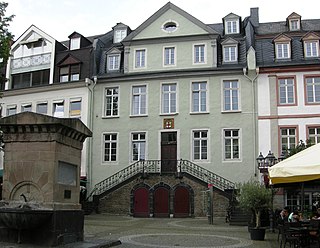
The former Stadtkommandantur Koblenz is a building in Koblenz, Germany. The front is located on the Am Plan square. The building has been used over time as both a town hall and a fire station. Today it is a residential building. The building is an example of strict Baroque architecture based on the French model, which characterized Koblenz at the beginning and in the last third of the 18th century.
58. Peter-Friedhofen-Kapelle
The Peter-Friedhofen-Kapelle is a chapel of the Order of the Brothers of Mercy of Mary Help of Christians in the old town of Koblenz. This is where the first motherhouse of the order founded by Peter Friedhofen stood.
59. St. Servatius
The parish church of St. Servatius is a Catholic church in Koblenz, Germany. The parish church was built between 1833 and 1840 in the district of Güls and replaces the old Servatius Church from the 13th century, which had become too small. It bears the patronage of St. Servatius of Tongeren.
60. Carolaturm
The Carolaturm is an observation tower in Koblenz, Germany. It stands on a steep slope to the Moselle in the Lay district and offers a view of the Moselle valley and Winningen. The tower is a monument to the development of tourism and the instrumentalization of the landscape.
61. Denkmal für das Infanterie-Regiment „von Goeben“ Nr. 28
The Monument to the Infantry Regiment "von Goeben" No. 28 is a monument in memory of the fallen soldiers of the Infantry Regiment "von Goeben" No. 28. The monument, erected in 1930, is located in the courtyard of Fort Helfenstein in Koblenz, which is located in front of Ehrenbreitstein Fortress. After the partial destruction in 1945, only the base of the monument remains as a memorial stone.
Wikipedia: Denkmal für das Infanterie-Regiment „von Goeben“ Nr. 28 (DE)
62. Brunnen am Plan
The fountain Am Plan is a classicist fountain in the old town of Koblenz on the square Am Plan. In addition to the obelisk on Deinhardplatz and the Castor Fountain, the Am Plan fountain is one of the last testimonies to the early water supply in Koblenz.
63. Wache am Helfenstein
Helfenstein Castle is a defunct spur castle on the Ehrenbreitstein in Koblenz, Germany. It was built around 1160 on a mountain spur south of the Electoral Trier castle of Ehrenbreitstein by the von Helfenstein family. Both castles were separated from each other by a deep gorge. The family initially served on the Ehrenbreitstein, but expanded its domain around 1300 with the construction of the Sporkenburg and Mühlenbach Castle.
64. DB Museum Koblenz
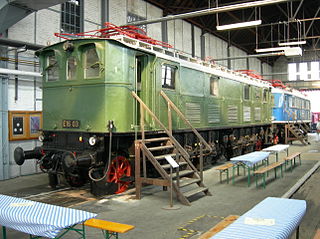
The DB Museum in Koblenz was opened on 21 April 2001 as the first remote site of the Nuremberg Transport Museum. It is run by volunteer workers as part of the Stiftung Bahn-Sozialwerk (BSW), a kind of railway workers social service organisation, and has its origins in a BSW's 'Group for the Preservation of Historical Railway Vehicles' at Koblenz.
65. Klausenbergkapelle
The Klausenberg Chapel is a chapel in Koblenz, Germany. The Marien-Kapelle, built in the 19th century, stands in the Ehrenbreitstein district and has a memorial plaque for the Electoral Trier lieutenant Freiherr Arnold von Solemacher (1766–1795), who died here in 1795.
66. Mutter-Beethoven-Haus
The Birthplace of Beethoven's mother is a cultural heritage monument in Ehrenbreitstein, on the River Rhine opposite Koblenz, in Rhineland-Palatinate, Germany. Maria Magdalena Keverich, mother of the composer Ludwig van Beethoven, was born here in 1746; it is now a museum.
67. St. Antonius Eremit
St. Antonius Eremit is a Catholic chapel in Koblenz, Germany. The chapel in Bisholder, a district of the Koblenz district of Güls, is a branch of the parish church of St. Servatius and was probably built in 1764. It bears the patronage of St. Anthony the Great.
Share
How likely are you to recommend us?
Disclaimer Please be aware of your surroundings and do not enter private property. We are not liable for any damages that occur during the tours.
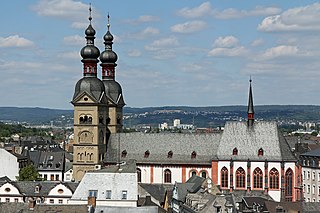
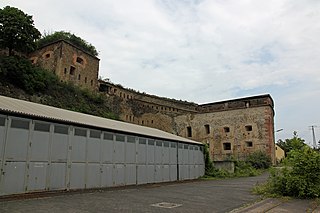
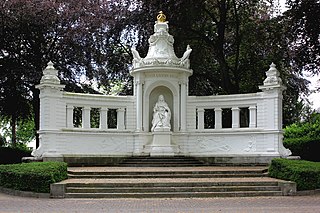
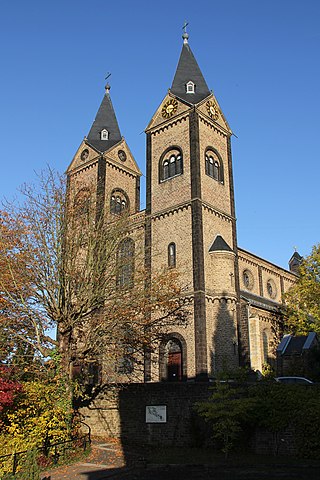
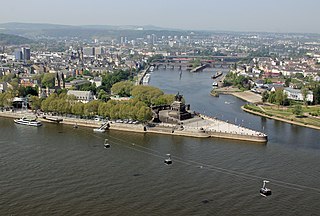
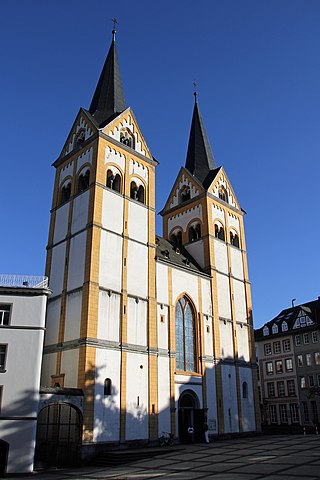
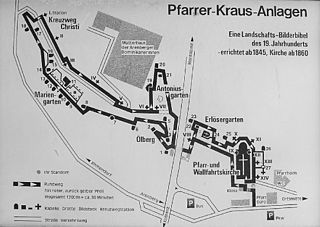
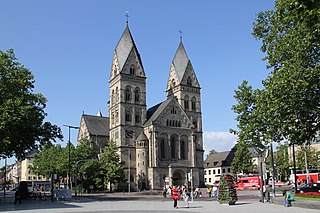
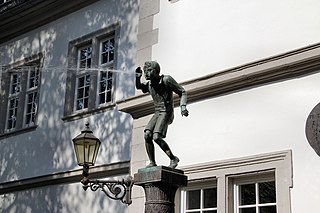
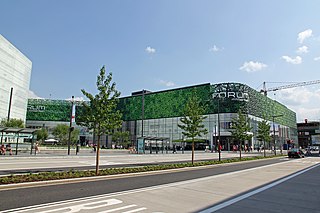
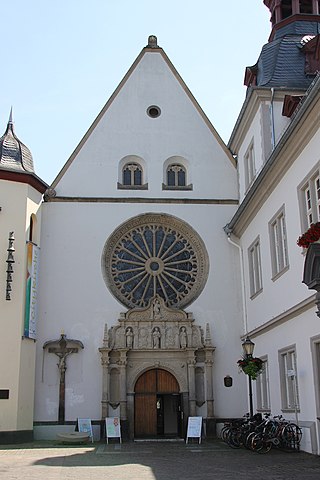
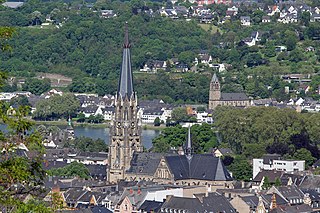
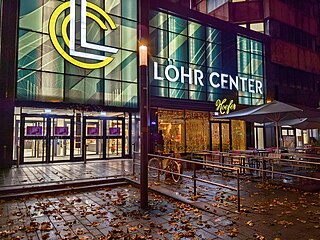
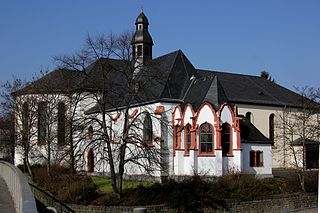
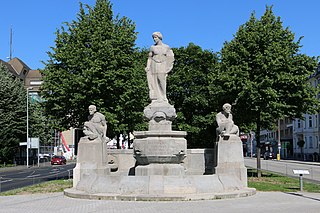
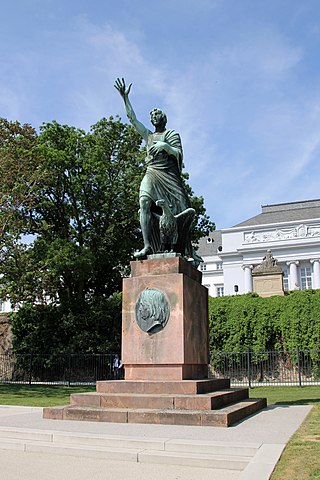
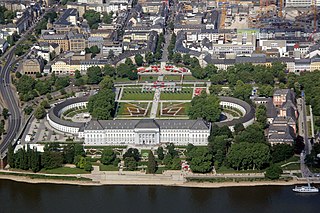
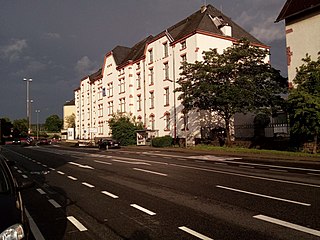

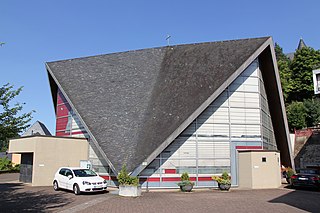
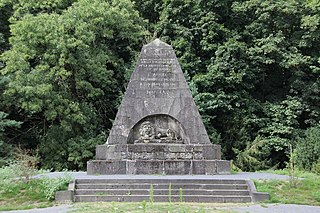
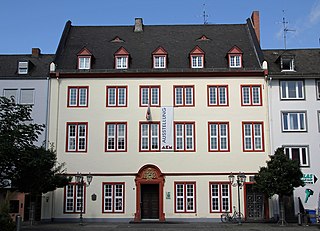
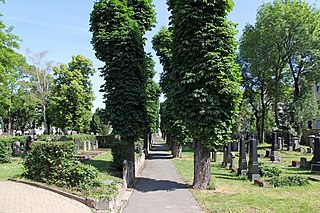
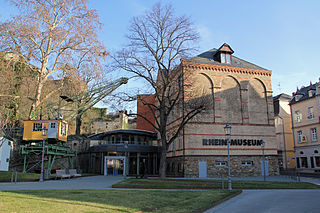
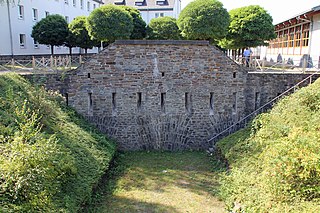
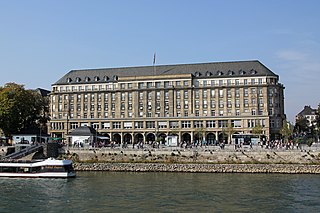
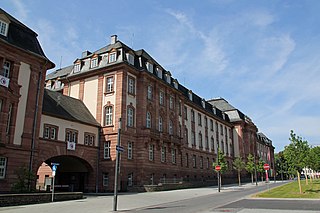
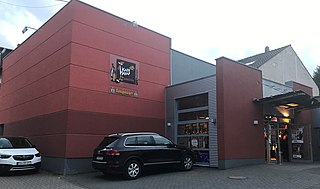
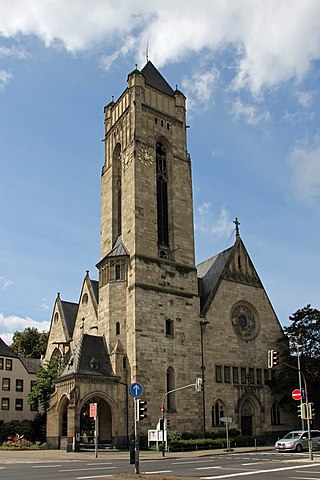
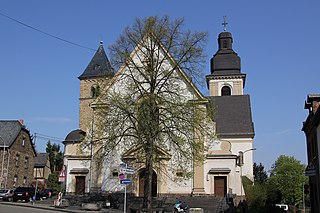
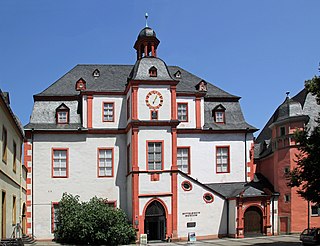
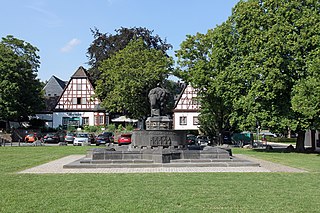

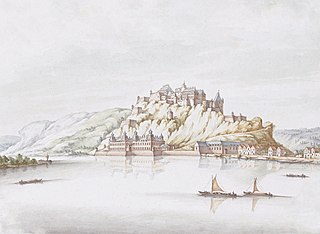
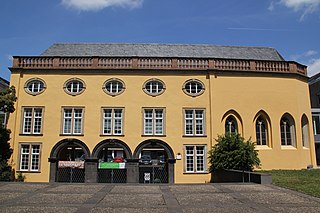
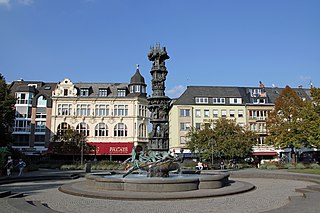
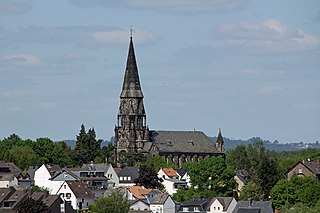
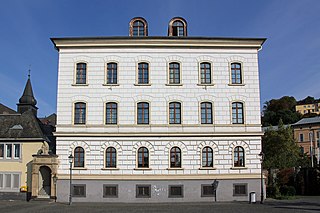
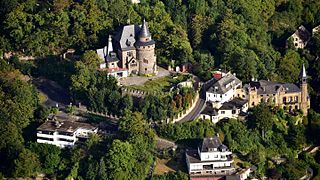
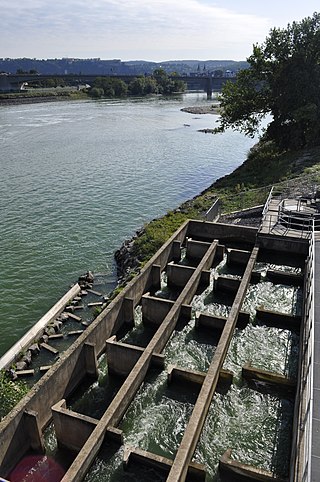
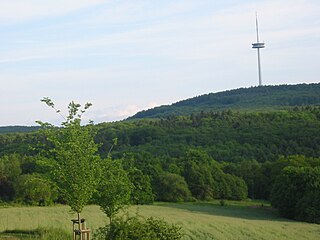
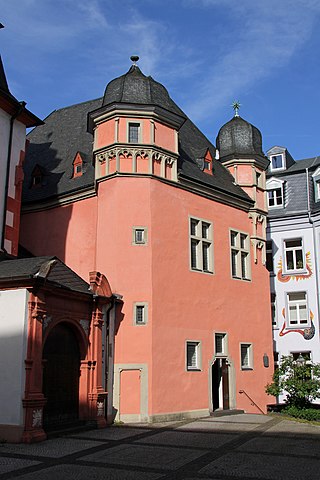
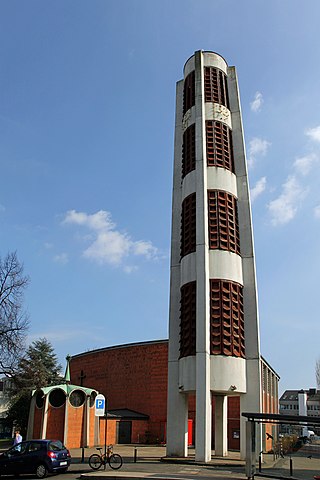
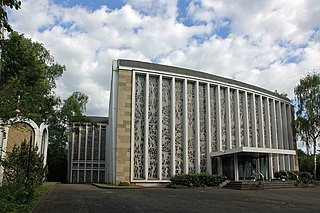
.jpg)
